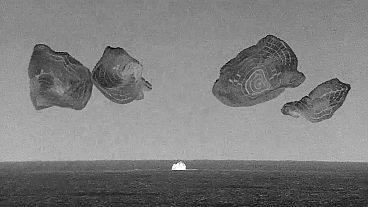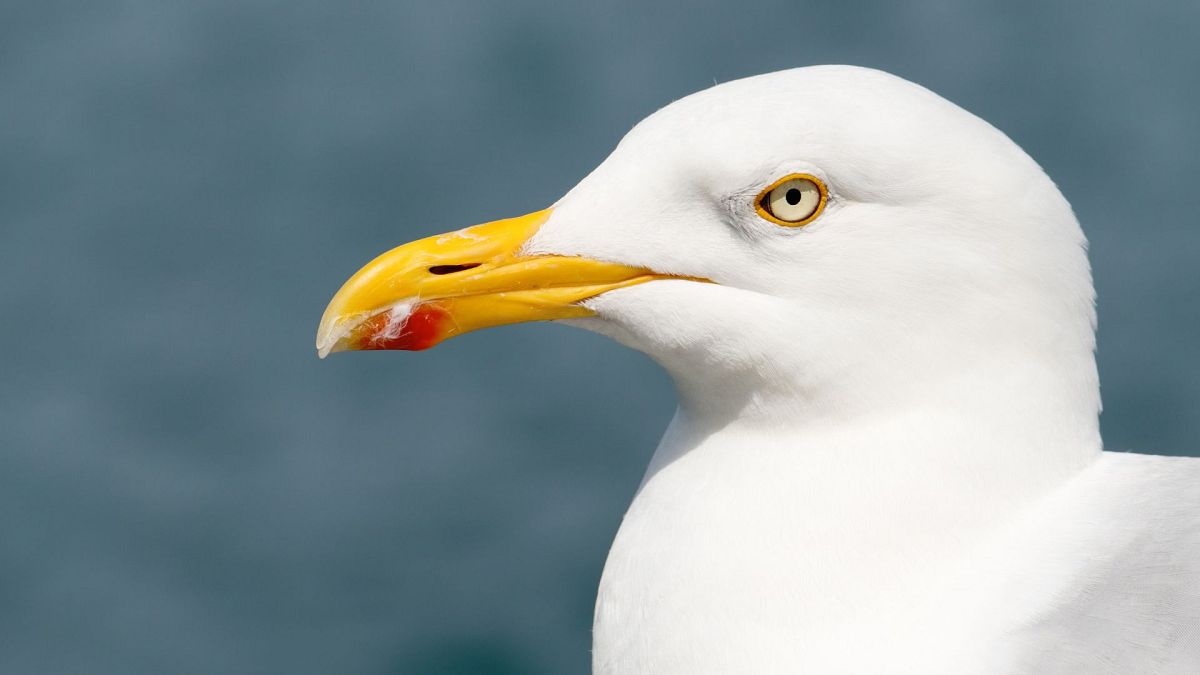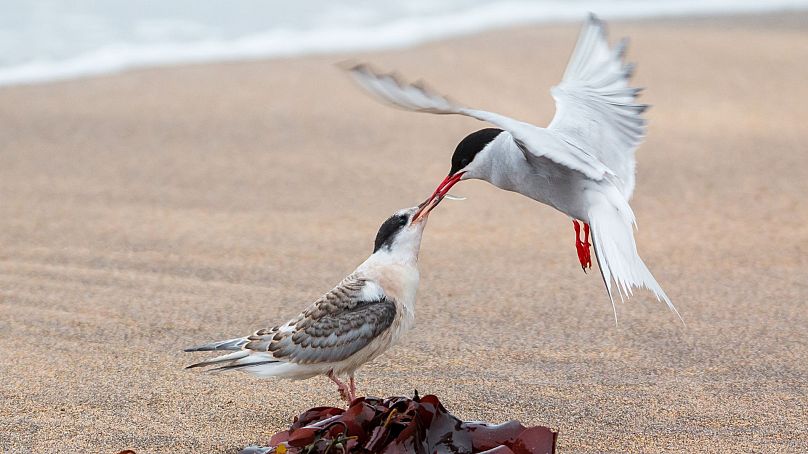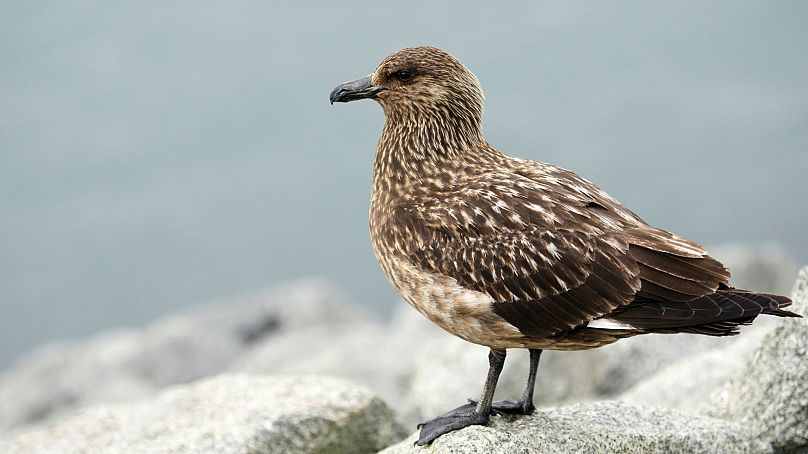Seabirds are threatened by warming oceans and overfishing in the UK.
Pesky seagulls swooping in for a taste of ice cream or fish and chips are an essential part of the Great British seaside holiday.
But this could soon be a thing of the past, as common gulls join four other seabird species newly at risk of extinction in the UK.
Also joining the UK’s conservation ‘red list’ are the Arctic tern, Leach’s storm-petrel, great black-backed gull and great skua, according to research published on Monday in the British Birds journal.
Almost a third of bird species in Britain are now considered at risk of local extinction, with other seabird species including gannets and puffins already red-listed.
“The worsening status of some of the UK’s breeding seabirds highlights how our marine environment is struggling to withstand the demands we are making of it and the increasing impacts of climate change,” says Dr Gemma Harper, chief executive of The UK government’s Joint Nature Conservation Committee (JNCC) in response to the news.
Why are UK seabirds under threat?
The International Union for Conservation of Nature (IUCN) and UK Birds of Conservation Concern (BoCC) use a traffic light system to indicate the status of species.
They take into consideration reductions in population size or geographical range of species, as well as the extinction risks they face.
Red-listed seabirds and their food sources have been hit hard by changing weather patterns and rising ocean temperatures. They are also threatened by commercial overfishing and bycatch, which reduce the availability of their prey.
They face further threats from native and invasive predators and disease. The development of offshore renewable energy is also a risk for seabirds, according to the study.
While four out of the five new species on the list were already in decline before the latest outbreak of bird flu, the great skua has been severely impacted by the latest strain of Highly Pathogenic Avian Influenza (HPAI) which emerged in 2021.
BoCC shows that 18 out of the UK’s 26 regularly occurring breeding seabird species are now threatened with extinction in Britain, while almost half of the 235 regularly occurring species are at risk.
Two seabird species show improvements
It’s not all bad news for the UK’s seabirds, however, as shags have moved from red to amber status, while black guillemots have moved from amber to green.
Keeping tabs on species helps action groups and governments prioritise and evaluate the effectiveness of conservation action.
Tackling overfishing and bycatch - when unwanted fish are trapped in commercial nets - is one way to shield seabird species from decline. This could be achieved by expanding marine protected areas and further restricting bottom trawling and the use of cast nets which sometimes also entrap birds themselves.
In March this year, the UK banned sand eel fishing, in part to revive seabird colonies which rely on this important food source.
The list of threatened species will be assessed again in 2027.

















